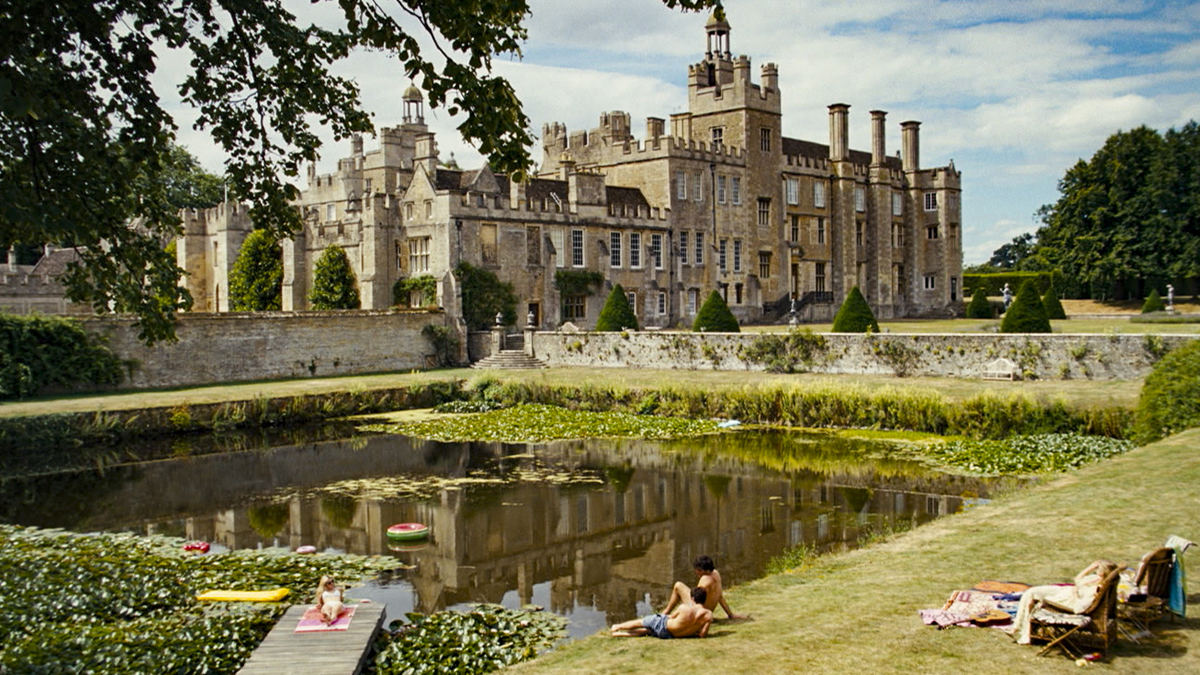The title of Emerald Fennell’s new movie ‘Saltburn’ refers to a fictional country house in which a lowly commoner (played by our own Barry Keoghan) is introduced to the aristocratic world of Jacob Elordi and the British upper class. ‘Saltburn’ now joins the pantheon of great fictional movie houses and estates, many of which have almost become as memorable as the movie’s characters themselves. Here, Declan Cashin lists some of our faves…
Wayne Manor:
Obviously, what sets Bruce Wayne’s Gotham mansion apart from other moneybags’ massive gaffs is what is located beneath it: the Batcave. Through the many iterations of Batman we’ve had in the last 30 years, the fundamentals of Wayne Manor remain the same: big house overseen by Alfred Pennyworth, with huge tech-and-weapon-and vehicles-stuffed cave underneath. Gaining entry to the Batcave via fireman pole just adds to the fun. Tony Stark’s house and the Avengers’ Mansion might pack a modern punch, but Wayne Manor has more BOFF! BAM! BANG!
Xavier Institute:
Or the X-Mansion of X-Men fame, in common parlance. The inherited property of Charles Xavier, it serves as a home, research institute and school for the gifted mutant, meaning there’s rarely a dull moment around this pile of bricks. On top of all that, depending on when (and in what timeline) you drop by. you’re likely to run into Patrick Stewart, Ian McKellen, James McAvoy, Michael Fassbender, Jennifer Lawrence, Halle Berry and/or Hugh Jackman. It’s basically the Graham Norton red sofa of movie houses.
Xanadu:
Yes, I know you’re now singing Olivia Newton-John’s song of the same title in your head, but please, concentrate! Xanadu is the name of Charles Foster Kane’s (Orson Welles) enormous compound in Citizen Kane. It’s basically a castle built on a mountain, a “stately pleasure dome” described as “49,000 acres of nothing but scenery and statues.” Upside: it comes with its own zoo. Downside: it’ll cost you your soul. Totally worth it.
Tara:
Yeah, so, like much of Gone With The Wind today, you can’t talk about Scarlett O’Hara’s beloved home Tara without acknowledging its, erm, cosy depiction of slavery in pre-Civil War America. It’s not a home, it’s a plantation. However, it’s central to the movie’s plot so…Best that can be said of the place is that it partially inspired the movie’s famous line, “After all, tomorrow is another day.”
Manderley:
Hitchcock’s Rebecca (1940) and Ben Wheatey’s 2020 remake, both based on Daphne du Maurier’s novel, emphasises how important the de Winter house is to the action, opening with the immortal line, “Last night I dreamt I went to Manderley again”. This writer would do a lot of things for a huge house like this, but not sure I could cope with the first-wife obsessed housekeeper, that rip Mrs Danvers, trying to drive me mad. Fun fact: Enya’s castle in Killiney is named Manderley!
4 Privet Drive:
Sure, the horrible Dursleys of 4 Privet Drive make their nephew, Harry Potter, sleep in a cupboard under the stairs, but, let’s face facts, that tiny bedroom would make you a killing on the Dublin rental market today. So maybe Uncle Vernon and Aunt Petunia were onto something? Nevertheless, the grim surroundings of Harry’s suburban upbringing – and his magical escape from them – are pivotal to his origin story.
Bramford Building:
Aka the Dakota in Manhattan, setting for Rosemary’s Baby, where the option of a lovely New York apartment and the realisation of your professional dreams comes at a Satanic cost. Again, this writer could easily tolerate a bunch of nosy devil-worshippers trying to birth the antichrist into the world for the right rental price.
Barbie Dream House:
The original ‘smart house’ that allows you to just float between floors and where you just pretend to eat and shower (it can also host amazing dance parties). However, like all smart houses, there can be glitches: namely, don’t have any existential crises or else it will all stop working. Also don’t allow the patriarchy to get so much as a toehold in the neighbourhood lest you want your Dream House to become a Mojo Dojo Casa House.
Bates Motel:
Pros: can check in any time of the day or night and are guaranteed to get a room. Cons: you’ll never check out – certainly not in a way you’d choose, anyway. There’s always something! What’s funny about cinema’s most famous motor lodge is that the iconic creepy house you’re picturing in your mind right now isn’t actually the motel. Instead, the most famous screen murder in cinema history – Janet Leigh’s fateful and fatal shower – takes place in one of the string of sad little cabins located on the lower grounds of the estate. Either way, the Bates Motel and house in Alfred Hitchcock’s Psycho will likely never be supplanted as the, ahem, mother of all fictional residences.
SALTBURN is at Irish cinemas from Nov 17th


